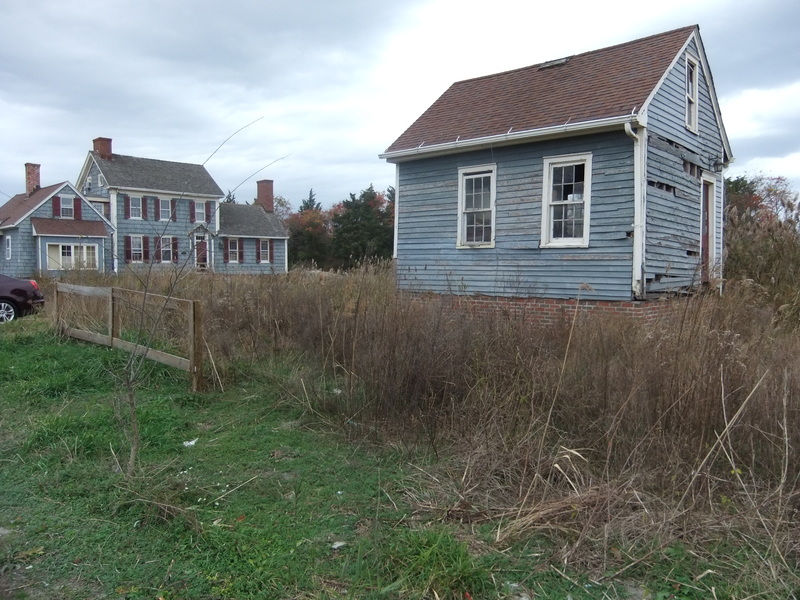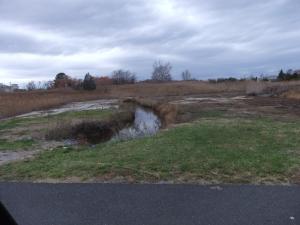Lewes approves Anglers Nest subdivision
Lewes Mayor and City Council have unanimously approved final subdivision plans for a project that has been in the planning pipeline for more than six years.
Anglers Nest, a development to be built at Anglers Road and Market Street, would comprise 17 single-family homes on a 5.3-acre parcel.
The panel granted final approval Nov. 14, but approval is contingent on a developers agreement protecting wetlands and creating covenants for the community.
Mayor and council’s approval followed a Nov. 8 public hearing at City Hall.
No one from the general public attended the hearing, but a few Lewes Planning Commission members were present.
Georgetown-based attorney David Hutt has represented project developer RJL Family Enterprises since 2004, when the concept was initially presented to Lewes Planning Commission.
Jeffrey Clark, landscape architect and owner of Land Tech Land Planning in Ocean View, has been project planner since its beginning.
Clark has presented several community plan iterations throughout the years, constantly revising and tweaking them until coming up with the one that has been approved.
Hutt said the resulting plan reflects years are careful planning and review.
Wetland complexities
Aspects of the project under jurisdiction of the Lewes Board of Public Works, Delaware State Fire Marshal’s Office and Sussex County Soil Conservation District, have already been approved.
Clark said about 42 percent of the site would be used for home lots, and about 11 percent would be used for streets. He said about 33 percent of the site is wetlands.
Clark said the site would be filled to elevate it about 30 inches. It would be sloped away from Anglers Road and lots would feature swales to capture stormwater.
He said only three lots would have direct access to Anglers Road, and all other lots would be accessible using a new road that would intersect with Market Street.
Jim McCulley of Watershed Eco LLC, a Newark-based environmental consulting firm, provided a detailed description of how wetlands adjacent to the development would be protected.
He said the parcel contains a variety of vegetation, some of it desirable, but much of it is phragmites, a plant that is invasive and undesirable.
McCulley recommended a phragmites control and elimination program that would be coordinated with the city to ensure phragmites control on an adjacent parcel. He said numerous desirable plant species would be introduced, making it harder for phragmites to continue growing.
McCulley said subdivision homeowners would have to agree to restrict use of lawn fertilizers to control excess nutrient runoff into wetlands. He said a homeowners association, yet to be established, would be required to hire an environmental property management company to ensure proper practices are followed.
Lewes Mayor Jim Ford said the city must know what those practices are for the development to be in compliance.
He said the city must also know what actions could be taken for noncompliance, and how penalties and corrective measures would be handled.
Hutt said municipalities can integrate requirements into homeowner association agreements and covenants. “Homeowners’ association agreements can be quite onerous,” he added.
City Councilman Ted Becker said he thinks the proposed wetland protection plan, as it stands, is “pretty loose.”
Hutt said the protection plan and other project details would be handled in the next step, writing a developer’s agreement that would establish homeowner association requirements.
Potential market, sea-level rise
Hutt called Lee Ann Wilkinson, a Realtor with Prudential Gallo Realtors, to testify about real estate-related aspects of the proposed development.
Wilkinson said the development would be compatible with the existing, surrounding community. She said typical buyers would probably be second-home purchasers who could be summer, weekend or year-round residents.
Wilkinson said the development would have a positive impact in the city, would increase real estate values in the vicinity and would not be a burden on city resources.
“What do you tell prospective buyers about Lewes Beach, and that it’s going to be underwater in 20 or 30 years?” Councilman Fred Beaufait asked Wilkinson.
“Any time you buy near water you have to be concerned,” she said.
Commissioners speak
Hutt objected to permitting planning commissioners to comment at the hearing. He said commissioners are “special members of the public” who have already had sufficient opportunity to comment, and he questioned whether it was legal for them to do so. In the absence of Glenn Mandalas, city solicitor, Ford allowed commissioners to speak.
Commissioner Nina Cannata, who opposed subdivision approval, said she disagrees with the developer’s statement that the project fits in with existing community.
Cannata said it doesn’t fit because the surrounding community is “a condo, a boatyard and a very loud restaurant.”
Cannata said she’s also concerned about the development’s proximity to wetlands.
“These houses aren’t going to be built on stilts. Whether you believe it or not, the tides are rising,” Cannata said, referring to sea-level rise.
Commissioner Mike Tyler approved of the final subdivision but said it lacks certain features, such as a grassy strip between curb and sidewalk. He said such a strip serve would serve as a pedestrian safety buffer.



















































